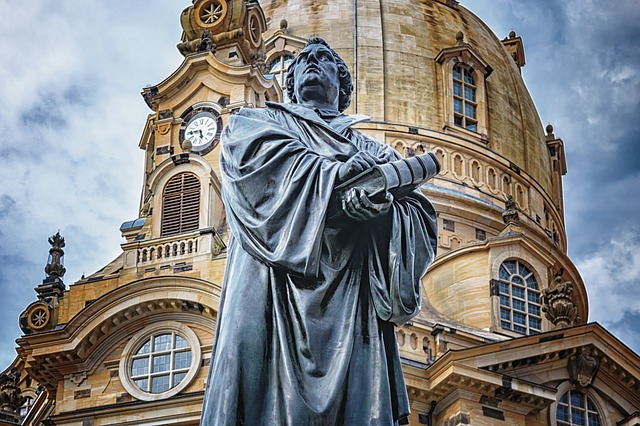Martin Luther was a very troubled monk.
He tried to find peace through the ascetic disciplines of monastic life and the sacramental system of the Roman Church.
Years later he said, “If ever a monk were to get to heaven by this monkery it would be I… I should have killed myself with vigils, prayers, recitings, and other work.”
Luther sought relief through confession. He regularly confessed his sins. At least one session lasted six hours as Luther sought to remember every sin he had committed since childhood. His confessor said to him, “Why don’t you go out and commit some real sins, and come back when you have something to confess.”
Luther returned to his cell and further introspection. He found no peace.
The man responsible for the care of his soul during this period was Johann von Staupitz. He was the head of the theological faculty at the University of Wittenberg and the prior of the monastery where Luther was a monk.
Staupitz tried to move Luther away from his introspective spirals and push him to study the Scriptures.
He told him to find peace in the blood of Christ and the study of Scripture.
In later life Luther said, “If it had not been for Dr. Staupitz, I should have sunk in hell.”
The years from when they first met in 1506 and 1525 were tumultuous and fast-paced.
The central issue for those in the middle of this whirlwind was how to balance the unity of the Body of Christ, purity of life, and correct belief..
Erasmus wrote In Praise of Folly brutally exposing the failings of priests and bishops but he remained within the Catholic Church. Johann Reuchlin, the greatest Hebrew scholar among the Christians of that era, was investigated by the Church for his contact with Jews and their literature. He remained within the Catholic Church. He had no children but trained his sister’s grandson, Philip Melanchthon. They were estranged when Melanchthon joined the Reformation and became a professor with Luther at Wittenberg.
Staupitz encouraged Luther but remained in the Catholic Church and finished his life as the abbot of a monastery in Salzburg while Saxony, where he had lived most of his life, became Lutheran. He was investigated by the church because of his contacts with Luther.
In a curious verdict of history the Roman Church, that he refused to leave, was suspicious of him and does not preserve his memory. The Lutheran church he definitely rejected remembers him in the Lutheran Calendar of Saints on November 8th.
We read about Luther and Staupitz. We read about Peter and Paul in Galatians and Paul and Barnabas in Acts. (Galatians 2:11-14; Acts 15:36-41)
In this fallen world and in our fallen finiteness the disagreements are very real.
Never miss out!
Get email updates whenever I publish new content.


We have missed your teaching bob, glad u r back!
Very good to hear from you, Joan.
Thank you very much
Thanks for putting this together. Timely!